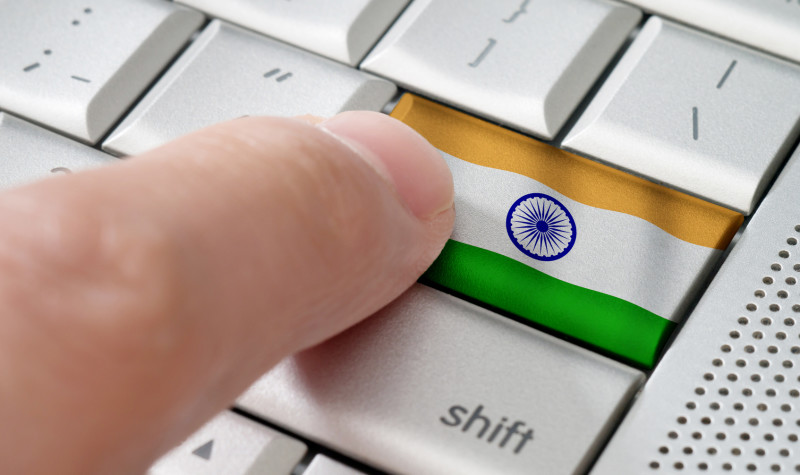India Online: Update

At the end of October, further to a trip to India, I wrote a piece on these pages entitled India Online. There, and in my longer piece on investment opportunities in India in the November edition of the Master Investor magazine (India Faces the Future with Confidence), I argued that the potential for online commerce in a fast-growing nation of more than 1.2 billion people is simply awesome.
I wrote that if, for one, Flipkart (India’s answer to Amazon), is not yet on your radar, it soon will be. Flipkart’s rival, Snapdeal, is also now attracting attention. Well, since October my enthusiasm for the sector has only intensified.
On Wednesday this week (16 December) I listened to a programme on BBC Radio 4 presented by the London-based Indian-born (and Oxford-educated) journalist, Mukti Jain Campion*.
Napoleon famously said that England was a nation of shopkeepers; but then he hadn’t been to India. Indians just love shopping. But online shopping is now the one of the fastest growing sectors of one of the fastest growing economies in the world. In the last year or two, online portals have sprung up offering everything from clothes, jewellery, consumer electronics and pet food to holy water from the Ganges. In India, you can even order blessings online. Don’t smile – it’s a serious business.
The Hindu analogue to Christmas is Diwali. Diwali of course, as well as being the Festival of Light, is also the Festival of Lakshmi, the Goddess of wealth. This year, during the first five days of Diwali, Amazon India had greater sales than for all of 2014!
Incredible when you consider the inherent capacity restraints. Less than one in ten Indian households has a computer. Only 20% of the population regularly use the internet. And very few people possess credit cards. The postal service is dismal and there is no universal postal code system. Street maps are usually unavailable. And India’s roads are plagued by uniquely Indian traffic jams (usually involving a variety of vehicles plus bullocks and the occasional elephant).
This has had some interesting knock-on effects. For a start, delivery businesses (mostly using motorcycle couriers) are booming. About three quarters of online purchases in India are transacted on a cash-on-delivery basis. This means that, unlike in the West, couriers usually have to handle cash. They can also take credit or debit card payments on their smartphones.
All this has necessitated a 21st century approach to logistics. Companies like Gojavas (founded as recently as 2013 and not yet listed) have constructed new computer-controlled warehouses. These have sprung up around all of the big five cities (Delhi, Mumbai, Bangalore, Kolkata, Chennai). Gojavas’s website proudly proclaims that it delivers a smile every 1.2 seconds.
According to The Times of India (07 October 2015) Snapdeal, owned by Jasper Infotech, has invested $20 million in Gojavas. This is the second round of investment made by Snapdeal which made its first investment in the firm earlier back in March this year. The investment in Gojavas is all part of a strategic partnership signed earlier this year to build capacity in the Indian supply chain.
Gojavas currently delivers to more than 350 cities. The company’s average delivery time for Snapdeal orders has been reduced by a full 24 hours in the last 6 months. It has become one the largest independent logistics players in India with current revenue of INR 5 billion.
Snapdeal, which competes with the likes of Flipkart and Amazon, has also launched a report in partnership with KPMG to highlight the importance of the e-commerce sector for growth of small and medium enterprises in India.
It’s not just happening in the big cities. More than 65% of Amazon India’s purchases are coming from small cities and rural areas. Beyond the reach of the big logistics companies with their networks of motorcycle couriers there are small, localised operators who are making e-commerce possible in rural India, selling such branded products as cosmetics, underwear, pharmaceuticals and mobile phones which are not available in the bricks and mortar village stores.
The model works like this. Poor villagers come to the local agent and peruse his tablet for the products that they want to buy. They choose the goods they want, having compared prices online. Then they pay the agent up-front in cash. The agent orders the goods on behalf of the villagers. A few days later the villagers come to the agent to collect their goods. In India, this is known as assisted shopping.
It seems then that poor, and often illiterate, villagers in rural India have exactly the same passion for branded goods as their affluent counterparts who pullulate the air-conditioned shopping malls of Mumbai, Bangalore and Delhi. India, as I have written here before, is a land of aspiration.
India is already the second largest smartphone market in the world with about 140 million users currently, predicted to rise to 650 million users by the end of 2018. Amit Agarwal, who launched Amazon India two years ago, says that the smartphone is the ultimate social-leveller: a ticket to a world “without barriers”.
I’ll have more to say about opportunities in India after my next visit in January. The only way is up.
Comments (0)